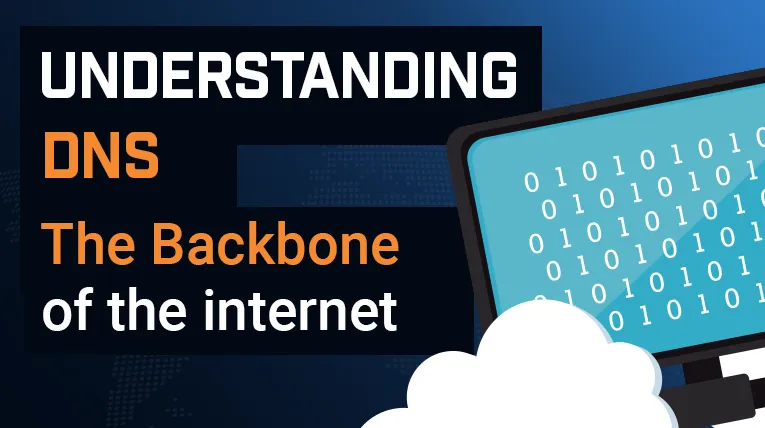Unlock the Secrets of SMTP Servers: The Hidden Key to Sending Emails Like a Pro!
Last Updated: January 10th, 2024 6 min read Servers Australia

Emails are still the backbone of communication. From personal exchanges to marketing campaigns, emails play a critical role in our daily lives and businesses. While most of us take sending an email for granted, there is a powerful system working behind the scenes to ensure every email reaches its destination, the SMTP server.
If you’ve ever wondered how emails travel across the internet or how businesses send thousands of emails reliably, this article will unlock the secrets of SMTP servers in simple terms. By the end, you’ll understand how SMTP servers work, why they are essential, and how they can transform your email game.
What is an SMTP Server?
SMTP is an acronym that stands for “simple mail transfer protocol”. In the simplest possible terms, an SMTP server is a server or collection of servers whose sole purpose is to send and receive messages in the form of emails. From a technical standpoint, an SMTP server is built just like any other server – it’s the function of an SMTP server that sets it apart. SMTP servers will also have their own dedicated address or set of addresses that will be determined by the client using the server.
How Does an Email Travel from Sender to Receiver?
For the role of SMTP servers, let’s break down what happens when you send an email.
Composing the Email
You write your email using a mail client like Outlook, Gmail, or another app. Once ready, you hit "Send."
Connecting to the SMTP Server
Your email client connects to an SMTP server, usually provided by your email provider or one you’ve set up.
Processing the Email
The SMTP server checks details such as the sender’s address (yours), the recipient’s address, and the domain names involved (like
gmail.comorbusiness.com).It verifies that the email can be delivered and identifies the correct path for it.
Relaying the Email
If the recipient’s email server is directly connected to the sender’s SMTP server, the email is delivered immediately. If not, the SMTP server relays it to another server closer to the recipient’s domain.
Delivery
Once the email reaches the recipient’s mail server, it is stored there until the recipient opens it.
Failed Delivery
If the recipient’s server is down or unreachable, the SMTP server stores the email temporarily and retries sending it. If all attempts fail, the email is returned to you as a “bounced” email with an error message.

Why Do Businesses Need Their Own SMTP Server?
For personal use, free email services like Gmail or Yahoo are sufficient. However, for businesses, especially those that send large volumes of emails, relying on shared email services can lead to problems.
Avoid Spam Reputation Issues
When using shared email servers, your emails share the same IP address as thousands of other users. If even one of them is flagged for spamming, it can harm the reputation of that shared IP. This means your important emails might end up in the recipient’s spam folder or fail to deliver at all.
With a dedicated SMTP server, you control your IP address, ensuring your emails are sent reliably and professionally.
No Sending Limits
Free email services often impose strict limits on the number of emails you can send. For instance, Yahoo allows only 100 emails per hour. For businesses running email marketing campaigns or sending notifications, these limits are unworkable.
By setting up your own SMTP server, you can send as many emails as your infrastructure supports, without restrictions.
Enhanced Security and Privacy
When you use a third-party email provider, your data passes through their servers. For businesses dealing with sensitive information, this can pose security risks. A private SMTP server allows you to have full control over your data and enhances email privacy.
Custom Domain and Professionalism
Sending emails from a custom domain (e.g., [email protected]) looks far more professional than using free addresses like [email protected]. With your own SMTP server, setting up custom email addresses is easy.
Real-Life Example: How a Business Solved Its Email Problems with an SMTP Server
Let’s look at a real-life example to see how an SMTP server can be a game-changer:
The Problem
A growing e-commerce business relied heavily on email for order confirmations, shipping notifications, and marketing campaigns. Initially, they used a shared email provider. However, they started encountering problems:
Important transactional emails were being marked as spam.
Marketing campaigns couldn’t scale due to email sending limits.
Their brand credibility suffered because they couldn’t use a custom domain for emails.
The Solution
The business decided to set up its own SMTP server. With a dedicated IP address and no sending restrictions, they saw immediate improvements:
Transactional emails reliably reached customers’ inboxes.
Marketing campaigns scaled without any delivery limits.
Using their custom domain, they improved brand professionalism and trust.
As a result, customer satisfaction increased, and their email campaigns delivered better engagement and ROI.
By setting up your own SMTP server, you can send as many emails as your infrastructure supports, without restrictions.
Steps to Setting Up an SMTP Server
Setting up your own SMTP server may sound complicated, but with the right guidance, it’s achievable. Here are the basic steps:
Choose the Right Infrastructure: You need a reliable server—physical or cloud-based to host your SMTP service.
Install SMTP Server Software: Popular options include Postfix, Exim, or Sendmail. These tools allow your server to process and send emails.
Configure the Server: Set up essential settings such as the server IP, email authentication, and encryption protocols (e.g., SSL/TLS) to ensure secure email delivery.
Get a Dedicated IP Address: A dedicated IP ensures your emails don’t get flagged due to others’ spam activity.
Test Your Server: Send test emails to verify the setup and troubleshoot any issues.
Monitor and Maintain: Regularly monitor email deliverability, performance, and security to keep your SMTP server running smoothly.
If you’re not confident in setting up a server yourself, consider consulting IT professionals or cloud hosting providers who specialise in SMTP solutions.
Final Thoughts
SMTP servers may operate behind the scenes, but they are the key to unlocking seamless email communication for businesses. By using your own SMTP server, you can avoid delivery issues, maintain professional branding, and scale your email campaigns without restrictions.
Whether you’re a small business sending transactional emails or a large organisation running massive marketing campaigns, understanding and leveraging SMTP servers can give you a significant edge.
Take control of your email delivery and watch your communication and business success soar!


